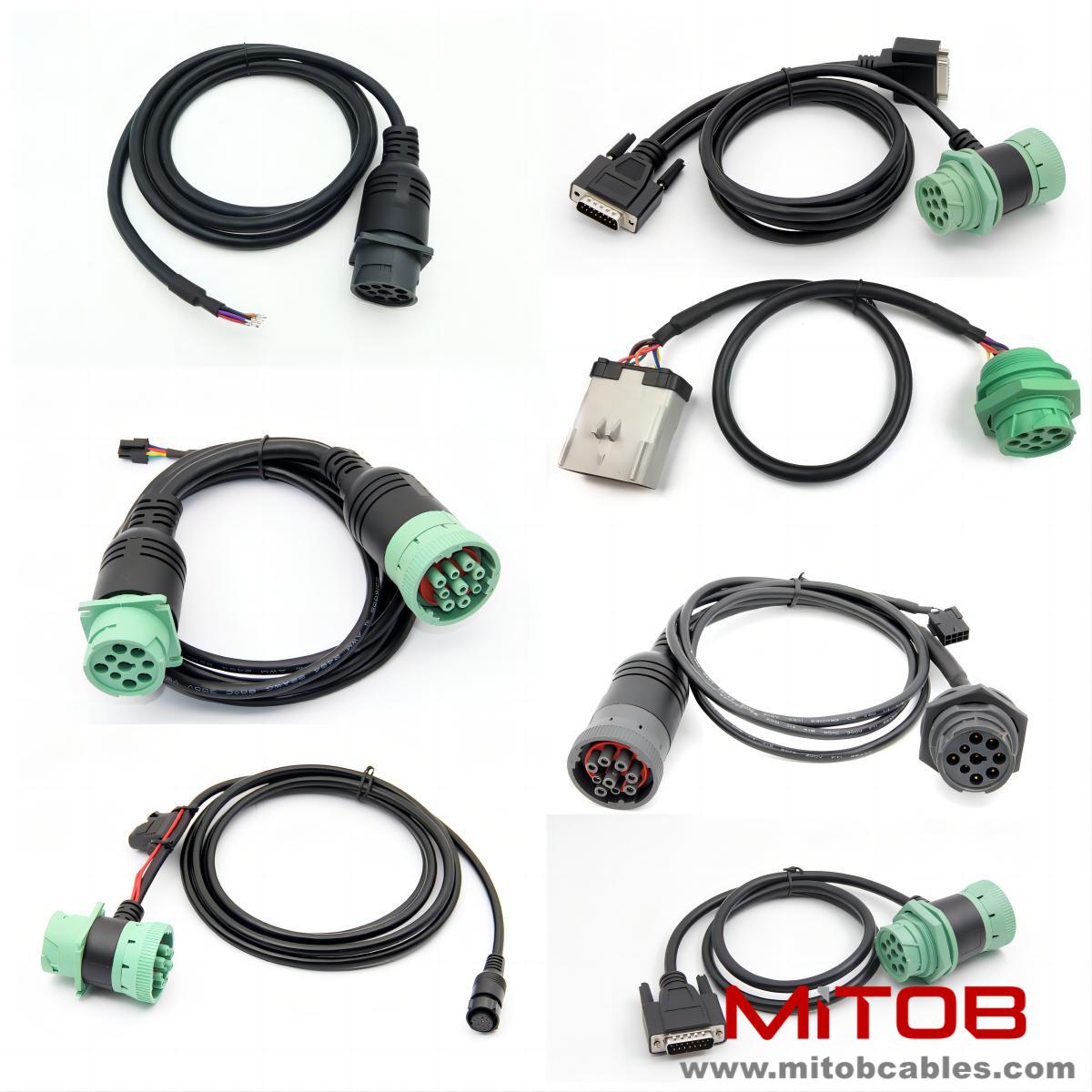The core process of fault diagnosis for J1939 cable
1. Read vehicle information and network topology
Identify ECU nodes:
The diagnostic software sends a "Request Node Address" (PGN 0x00F300) command through the J1939 protocol to obtain the addresses of all ECUs on the bus (such as engine ECU, transmission ECU, ABS module, etc.).
Obtain vehicle parameters:
Read vehicle identification code, ECU model, software version and other information through PGN.

2. Read the fault code (DTC)
Proactively requesting fault code:
Send "Request Diagnostic Trouble Codes" (PGN 0x00F180) to the target ECU, and the ECU returns the stored DTC list.
Interpretation of DTC meaning:
DTC usually consists of SPN (Suspect Parameter Number) and FMI (Failure Mode Indicator), for example:
SPN 123 (Engine coolant temperature sensor malfunction)
FMI 3 (signal voltage above normal)
Retrieve the specific cause of the malfunction through diagnostic software or manufacturer's manual.
3. Real time monitoring and data analysis
Monitoring parameter group (PGN):
For example, real-time data can be obtained through PGN 0x00F004 (engine speed), PGN 0x00F001 (coolant temperature), etc., to observe whether the parameters exceed the normal range (such as speed fluctuations, abnormal temperature increases).
Draw a trend chart:
Analyze the trend of parameter changes over time and locate intermittent faults (such as poor sensor contact).
4. Conduct proactive testing
Send control commands (such as PGN 0x00F301) through J1939 to forcibly activate or deactivate a certain actuator (such as fuel injector, fan, solenoid valve), observe the vehicle's response to verify whether the fault is related to the actuator.
5. Clear the fault code
After confirming the fault repair, send the "Clear Diagnostic Information" (PGN 0x00F190) command to clear the historical fault codes stored in the ECU.
Contact: Kevin
Phone: 0086-18823374992
E-mail: kevin@mitobcable.com
Whatsapp:
Add: Bld B2, Floor7 , Xinghe Zhongkai AI Industrial Park, Zhongkai High-tech Zone, Huizhou,China